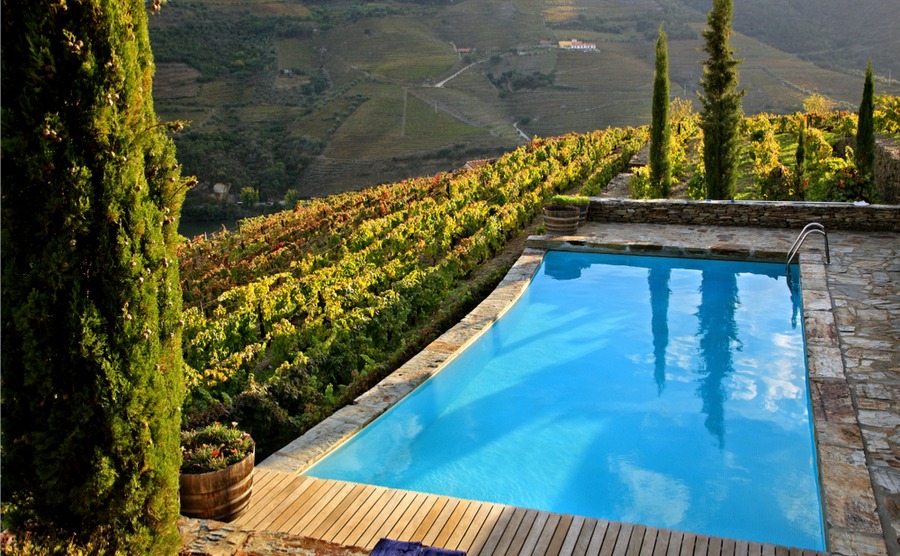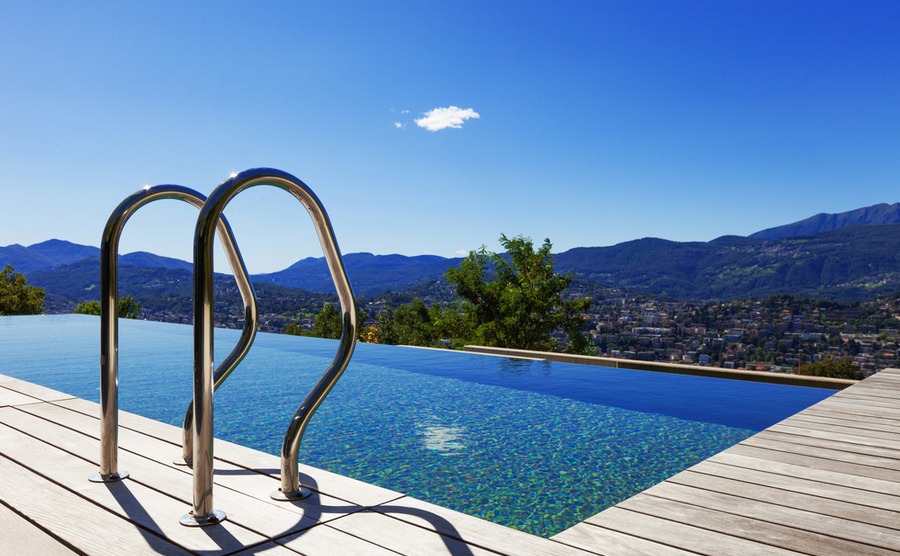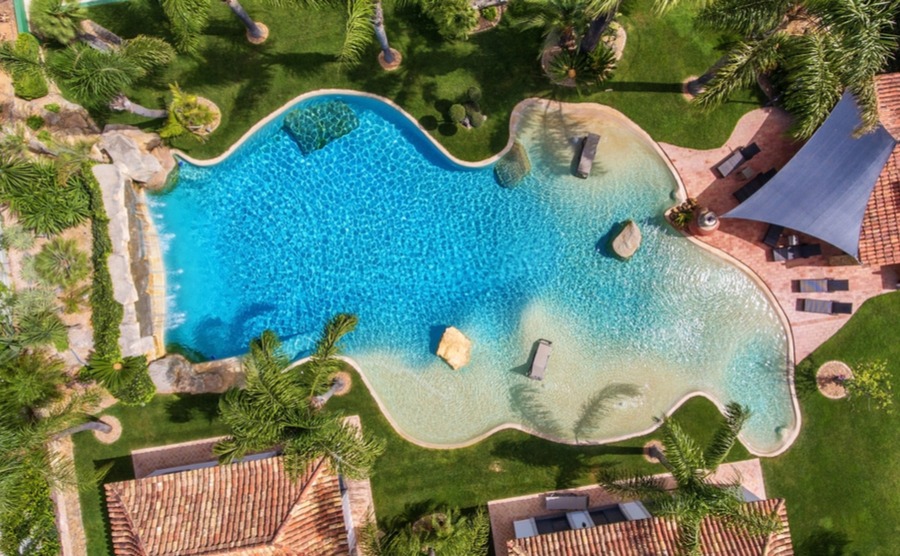If your swimming pool isn’t there, isn’t big enough or needs a revamp, where do you start and what are your likely costs when designing your swimming pool? And if you want to swim in style, what are the latest swimming pool fashions? Distinction by Property Guides went in search of pool paradise.
A pool is like any other part of your home’s design, whether interior, exterior or landscape. It’s both an asset and a statement. A place to entertain and a place to meditate. However, the risks of water damage, and potential for health risks that arise from water and warmth, mean that this is an area where you should never, ever skimp on design or maintenance.
At the end of the day, your pool will be yours again. The perfect, stunning, warm, beautifully-lit haven. A reward for your hard work.
But most of all, it should be fun. You’re going to have your kids’ school pals round whether you want them or not! Friends and family without pools will be paying impromptu visits on the hottest day of the year. Then, at the end of the day, your pool will be yours again. The perfect, stunning, warm, beautifully-lit haven. A reward for your hard work.
So what will it cost to install the perfect pool, or to renovate the old one? What are the requirements of an infinity pool? Is it possible to have a natural pool and swim among the frogs and dragonflies? We have some answers for you.

Who needs a beach anyway? Your pool overlooking the Douro Valley in Portugal. (Heracles Kritikos / Shutterstock.com)
The costs
To start from scratch, a 10m x 5m pool will cost around £45,000 for a concrete-based, in-ground pool with a well-designed mosaic tile surround. That’s a good £20,000 more than the most basic version, but then again you can easily spend £150,000 when you start getting into multi-level pools with waterfalls and islands, coral stepping stones, jets, glass walls and infinity edges.
The factors that affect price include the size of the pool, the use of lights within the pool and around, and the types of finishes.
Infinity Pools
For an infinity pool, where the edge appears as the edge of a waterfall or horizon, you’ll need to budget another 20% or so for an infinity edge on one side. Infinity pools are more complicated – with the water running over the edge you need a catch basin with a volume at least as much as the people who will be using the pool! The outer wall of the infinity edge will both be visible, and must be able to withstand the endless flow of water too, all adding to the cost.

Worth the money? We think so! An infinity edge pool.
On the other hand, for gardens that aren’t flat, especially on a hillside with gorgeous views, an infinity pool can utilise the uneven surface.
LED and fibre-optic lighting systems are an essential addition to any high-end pool
Lighting
If you’ve ever swam off a Greek Island or dived at twilight, you’ll know that the interplay of light and water is just about the most beautiful thing in the world. At night, advanced lighting systems can make your pool utterly magical too, and add a layer of sophistication. Today, LED and fibre-optic lighting systems, with control systems that are simple to use, are an essential addition to any high-end pool, and they don’t require you to drain the pool to replace blown incandescent bulbs either.
A couple of ideas. Use LED lighting in the edges of the pool to diffuse a gentle, and changing, range of colours across the water. You’ll need plenty of bulbs to create a smooth wash of light. Fibre-optic lighting in the edges and floor are not only inexpensive, but can create a magical star-scape as if you’re floating in space.
Your lighting system should extend to the landscaping too, with rising lights for trees and foliage.

A shaped swimming pool certainly adds style and interest, but will it cost more too?
Shape
The guitar-shaped pools beloved of 70s rock stars might seem a little naff these days, but a sinuous shape that evokes a river feels more in tune with today’s penchant for wild swimming. Indeed if you’re swimming for exercise, long, narrow pools are possible, simply by linking two smaller pools with a channel.
The greater the outer surface area the more the cost, so in theory a rectangular pool will cost more than a kidney shaped or oval pool. In practice, however, a typical off-the-shelf rectangle will normally be less than a more exciting L-shaped, freeform or round pool.
For serious swimmers, a “lap pool” is a long, narrow pool that can be as much as 25 metres long.
For serious swimmers looking for training or exercise, a ‘lap pool’ is a long, narrow pool that can be as long as 25 metres. A width of 2.5 metres allows two to swim alongside each other in comfort. The other option for swimming exercise are ‘endless pools’, where a constant flow of water allows you to swim at variable speeds within a smaller pool. Your options vary from, essentially, a long Jacuzzi with most of the jets at one end, retailing for around £35,000, to a device that fits into your own pool. These are closer to £7,000.
Natural swimming pools
The big problem with wild swimming, aside from the pollution, is getting out onto a muddy riverbank with nettles! A modern natural pool recreates the pleasures of a pond, but uses natural filtration techniques, decking and landscaping to make it all beautifully user-friendly. Swim among reeds and rushes, lillies and water mint. Take a morning swim with dipping swallows, and an evening dip with bats swooping down so fast you can barely see them. Maybe even a kingfisher will pay a visit.
Natural pools are entirely chemical free, but kept clean and free of algae with advanced filtration systems and ultra-violet light. You can have them with or without plants. Some systems allow fish to swim, but ducks tend not to be such a good idea!
Natural pools can also be heated without killing off the plant-life. One downside however, is that while a conventional pool can be covered and forgotten about for the winter, a natural pool must be left uncovered and will need to be maintained, a little, throughout the winter.






